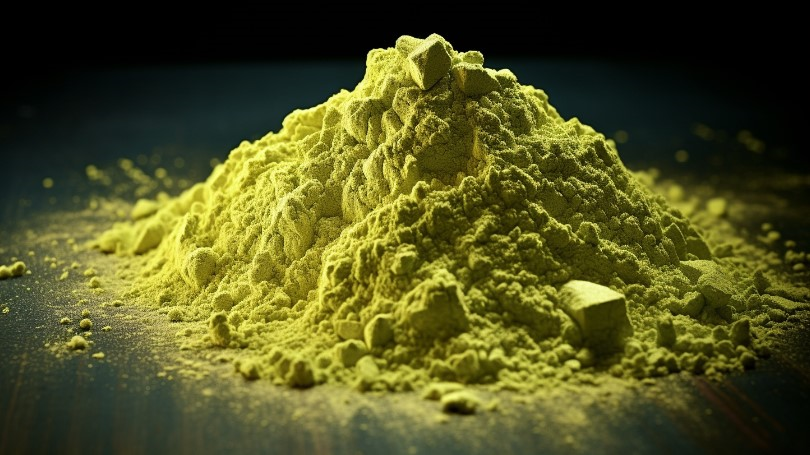Dihydroquercetin bekerja pada sistem pernapasan

Dihydroquercetin is a natural flavonoid with antioxidant, anti-inflammatory, anti-tumor, cardiovascular and neuroprotective effects. Its mechanism involves scavenging free radicals, inhibiting inflammatory factors and signaling pathways, and inducing cell apoptosis. Dihydroquercetin is a kind of natural pharmaceutical ingredient with wide application prospect, but the research is still in the preliminary stage.
Dihydroquercetin is a flavonoid that occurs naturally in many fruits, vegetables, and plants. In recent years, with the in-depth study of phytochemistry and nutrition, the mechanism of dihydroquercetin has been gradually revealed.
Dihydroquercetin is a natural antioxidant that exerts its effects through a variety of pathways. Heres how dihydroquercetin works:
Scavenging free radicals
Dihydroquercetin has powerful antioxidant capacity and can remove free radicals from the body. Free radicals are molecules or ions that carry one or more unpaired electrons, and because they have unpaired electrons, they steal electrons from other molecules, causing oxidative stress. Too many free radicals can cause damage to cells and tissues, accelerate the aging process and promote the occurrence of various chronic diseases. Dihydroquercetin can react with free radicals to make them more stable molecules, thus eliminating free radical damage to the body.
Antioxidation
Dihydroquercetin has a strong antioxidant effect, and its antioxidant capacity is much higher than that of vitamins C and E. Studies have shown that dihydroquercetin is able to mop up free radicals in the body and protect cells from oxidative damage. Free radicals are highly reactive chemicals that damage cell membranes, proteins and DNA, leading to cell dysfunction and even death. Dihydroquercetin plays an antioxidant role by inhibiting the production of free radicals and scavenging free radicals.
Suppress inflammation
Inflammation is a common phenomenon in living organisms, often associated with infection, injury or disease. Long-term inflammation can lead to tissue damage and organ dysfunction. Dihydroquercetin has anti-inflammatory effects and can reduce the inflammatory response. Studies have found that dihydroquercetin inhibits the production of inflammatory factors such as tumor necrosis factor-α (TNF-α), interleukin-1β (IL-1β), and cyclooxygenase-2 (COX-2), thereby reducing the inflammatory response. In addition, dihydroquercetin is able to inhibit inflammatory signaling pathways such as nuclear factor κB (NF-κB) and protein kinase C (PKC), further playing an anti-inflammatory role.
Antitumor effect
Tumor is a kind of abnormal cell proliferation disease caused by gene mutation. Dihydroquercetin has anti-tumor effects, which can inhibit the growth and spread of tumor cells. It was found that dihydroquercetin can induce apoptosis of tumor cells and inhibit the proliferation and invasion of tumor cells. In addition, dihydroquercetin also inhibits tumor angiogenesis, thereby inhibiting tumor growth and spread. The antitumor effect of dihydroquercetin is related to its anti-oxidation, anti-inflammation and inhibition of tumor signaling pathways. Dihydroquercetin can also regulate the immune response and enhance the body’s immunity. The immune system is the body’s complex set of defense mechanisms designed to recognize and eliminate invading pathogens as well as abnormal cells in the body. However, overactivation or dysregulation of the immune response can lead to autoimmune diseases and other problems. Dihydroquercetin regulates the immune response, keeping it in balance and reducing the immune system’s attack on normal tissue.
Efek perlindungan kardiovaskular
Cardiovascular disease is one of the most common diseases in the world, which seriously endangers human health. Dihydroquercetin has a cardiovascular protective effect and can reduce the risk of cardiovascular disease. Studies have found that dihydroquercetin can reduce plasma cholesterol levels and reduce the development of atherosclerosis. In addition, dihydroquercetin also inhibits platelet aggregation and reduces the risk of thrombosis. The cardiovascular protective effect of dihydroquercetin is related to its anti-oxidation, anti-inflammation and regulation of lipid metabolism.
Neuroprotective effect
Neurodegenerative diseases are a group of diseases caused by neuronal damage and death, such as Alzheimer’s disease, Parkinson’s disease, etc. Dihydroquercetin has a neuroprotective effect and can protect neurons from damage. Studies have found that dihydroquercetin can inhibit the apoptosis of nerve cells and protect nerve cells from damage. In addition, dihydroquercetin can also inhibit neuroinflammatory response and reduce the damage of neuroinflammation to neurons. The neuroprotective effect of dihydroquercetin is related to various mechanisms such as anti-oxidation, anti-inflammatory and regulation of nerve signaling pathways. Dihydroquercetin also has anti-inflammatory effects and can inhibit the inflammatory response. Inflammation is the body’s natural response to eliminate invading pathogens and repair damaged tissues. However, an excessive inflammatory response can lead to tissue damage and disease. Dihydroquercetin inhibits the inflammatory response, thereby reducing inflammatory symptoms and promoting tissue repair.
In summary, dihydroquercetin has antioxidant, anti-inflammatory, anti-tumor, cardiovascular protective and neuroprotective effects. These mechanisms involve scavenging free radicals, inhibiting inflammatory factors and signaling pathways, inducing cell apoptosis, inhibiting angiogenesis and regulating lipid metabolism. Therefore, dihydroquercetin is considered as a natural pharmaceutical ingredient with wide application prospect. However, the current research on dihydroquercetin is still in the preliminary stage, and further studies on its mechanism and application value are needed in the future.
Backvita
